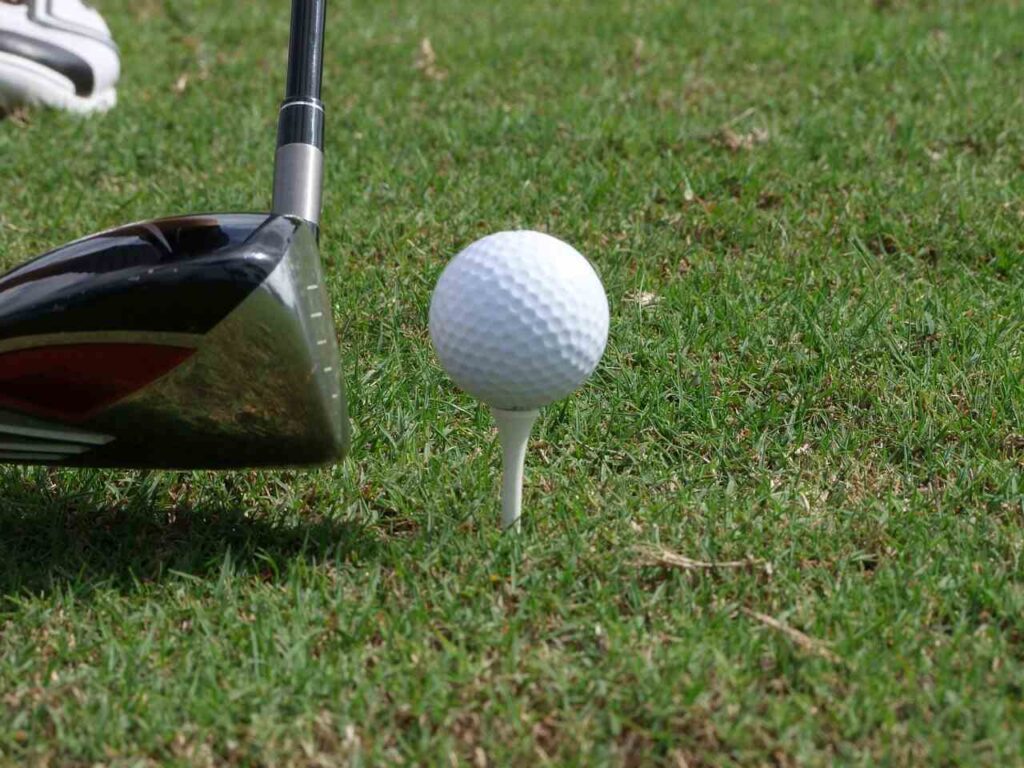The tee shot is one of the most critical aspects of golf, setting the tone for the entire hole. A strong, accurate drive can put you in an advantageous position, while a poor tee shot can lead to trouble. To help you tee off like a pro, here are some essential drills designed to perfect your start and boost your confidence on the tee.
Table of Contents
Understanding the Basics
Before diving into specific drills, it’s important to understand the fundamentals of a good tee shot:
- Grip: Your grip should be firm but relaxed, allowing for a smooth release.
- Stance: Position your feet shoulder-width apart, with the ball aligned with the inside of your lead foot.
- Posture: Maintain a slight knee bend and tilt forward from the hips, keeping your back straight.
- Alignment: Ensure your shoulders, hips, and feet are aligned parallel to your target line.
Essential Drills for a Perfect Tee Shot
1. Alignment Drill
Proper alignment is crucial for a straight shot. This drill helps ensure your body and club-face are aligned correctly with the target.
- Setup: Place a club or alignment stick on the ground parallel to your target line.
- Execution: Stand with your feet, hips, and shoulders parallel to the alignment stick. Practice hitting shots while maintaining this alignment.
- Focus: Pay attention to your body position and ensure your clubface is square to the target at address.
2. Tee Height Drill
The height of your tee can affect the launch angle and distance of your drive. This drill helps you find the optimal tee height for your driver.
- Setup: Experiment with different tee heights, starting with the ball’s equator aligned with the top edge of the driver’s clubface.
- Execution: Hit a series of shots with varying tee heights to observe the ball flight and distance.
- Focus: Find the height that gives you the best combination of launch angle and control. For most drivers, the ideal height is when half of the ball is above the club-face.
3. Slow Motion Swing Drill
A slow, deliberate swing helps you focus on mechanics and balance. This drill emphasizes proper form and a smooth tempo.
- Setup: Address the ball as usual.
- Execution: Perform a slow-motion swing, taking the club back slowly and deliberately, then transitioning smoothly into the downswing and follow-through.
- Focus: Concentrate on maintaining balance, proper wrist hinge, and a full shoulder turn. This drill helps engrain good habits and improves muscle memory.
4. One-Handed Swing Drill
Practicing with one hand helps develop strength and control in your dominant arm, which is crucial for a powerful drive.
- Setup: Address the ball as usual.
- Execution: Swing the club using only your lead hand (left hand for right-handed golfers). Repeat with your trail hand.
- Focus: This drill enhances your ability to control the clubface and improves coordination. It also highlights any weaknesses in your grip and swing path.
5. Weight Transfer Drill
Proper weight transfer is essential for generating power and maintaining balance. This drill focuses on shifting your weight correctly during the swing.
- Setup: Place a ball or small object under your trail foot’s heel.
- Execution: Practice your swing, focusing on shifting your weight to your lead foot during the downswing. The ball under your heel should help you feel this transfer.
- Focus: Ensure your weight shifts smoothly and naturally from your back foot to your front foot. This drill helps you generate more power and maintain balance throughout the swing.
6. Tee to Target Drill
This drill emphasizes accuracy and consistency, crucial for effective tee shots.
- Setup: Place two alignment sticks or clubs on the ground to form a narrow corridor aimed at your target.
- Execution: Tee up and hit shots through the corridor, focusing on keeping the ball flight within the sticks.
- Focus: This drill helps improve your aim and consistency. It forces you to concentrate on your swing path and clubface alignment at impact.
7. Tempo Drill
Maintaining a consistent tempo is vital for a repeatable, powerful swing. This drill helps you find and keep your ideal swing rhythm.
- Setup: Address the ball as usual.
- Execution: Use a metronome or count out a rhythm (e.g., “one” for the backswing, “two” for the downswing) to maintain a steady tempo.
- Focus: Keep your swing smooth and avoid rushing. A consistent tempo improves timing and helps ensure solid contact.
Conclusion
Mastering the tee shot is essential for a strong start to each hole. By incorporating these drills into your practice routine, you can improve your alignment, balance, weight transfer, and overall swing mechanics. Consistent practice and focus on these fundamentals will help you tee off like a pro, setting you up for success on every hole. Happy golfing!

Unique FAQs: Tee Off Like a Pro
How can I ensure my alignment is correct when teeing off?
Use the Alignment Drill to practice your setup. Place an alignment stick or a club on the ground parallel to your target line. Align your feet, hips, and shoulders with the stick. This visual aid helps ensure your body and clubface are properly aligned.
What is the optimal tee height for my driver?
The optimal tee height for most drivers is when half of the ball is above the top edge of the clubface. Use the Tee Height Drill to experiment with different heights and observe how they affect your ball flight and distance. Adjust until you find the best height for your swing.
How does the Slow Motion Swing Drill help improve my drive?
The Slow Motion Swing Drill emphasizes balance and proper mechanics. By swinging in slow motion, you can focus on each part of your swing, ensuring a full shoulder turn, proper wrist hinge, and smooth tempo. This helps engrain good habits and improve muscle memory.
Why should I practice one-handed swings?
Practicing one-handed swings helps develop strength and control in each hand. It enhances your ability to control the club-face and improves coordination. This drill also highlights any weaknesses in your grip and swing path, allowing you to make necessary adjustments.
What is the purpose of the Weight Transfer Drill?
The Weight Transfer Drill focuses on shifting your weight correctly during the swing. Proper weight transfer from your back foot to your front foot generates power and maintains balance. Using a ball or small object under your trail foot’s heel helps you feel this transfer and practice it consistently.
How can I improve my accuracy off the tee?
Use the Tee to Target Drill to improve your accuracy. Place two alignment sticks or clubs on the ground to form a narrow corridor aimed at your target. Practice hitting shots through this corridor, focusing on keeping the ball flight within the sticks. This drill helps improve your aim and consistency.
How do I maintain a consistent tempo in my swing?
The Tempo Drill helps you find and keep your ideal swing rhythm. Use a metronome or count out a rhythm (e.g., “one” for the backswing, “two” for the downswing) to maintain a steady tempo. A consistent tempo improves timing and helps ensure solid contact.
How often should I practice these drills to see improvement?
Consistent practice is key to improvement. Incorporate these drills into your regular practice routine, aiming to practice at least a few times a week. Regularly focusing on these fundamentals will help you see noticeable improvements in your tee shots.
Can these drills help with my confidence on the tee?
Yes, these drills are designed to improve your technique and consistency, which in turn boosts your confidence. By mastering the basics and regularly practicing these drills, you’ll feel more confident and prepared when teeing off.
What should I do if I’m still struggling with my tee shots?
If you’re still struggling, consider getting a lesson from a golf professional. They can provide personalized feedback and help you identify specific areas for improvement. Additionally, review your fundamentals and ensure you’re practicing the drills correctly.
How can I simulate course conditions during practice?
To simulate course conditions, practice on the range with a specific target in mind for each shot, just like you would on the course. Vary your targets and practice different types of tee shots, such as fades and draws. This helps you apply your practice to real-game scenarios.
Are there any mental strategies to help with my tee shots?
Mental strategies such as visualization and maintaining a positive mindset can greatly improve your performance. Before each shot, visualize a successful drive and focus on your target. Stay positive and trust in your practice and technique, even after a poor shot.



